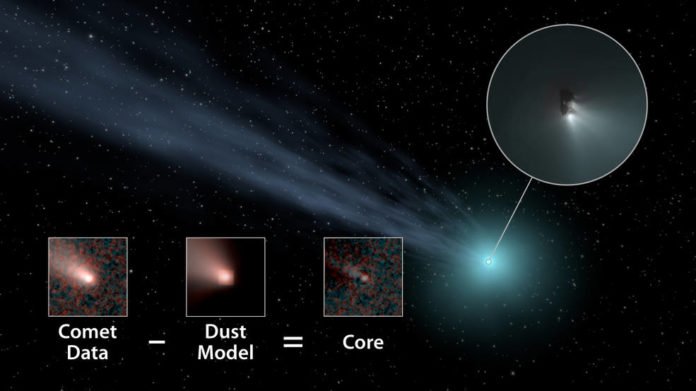A team led by researchers at NASA‘s Jet Propulsion Laboratory has recently found more large comets in our Solar System. Scientists describe them as massive icy wanderers.
Scientists have predicted that these massive comets might take hundreds or thousands of years to revolve around the sun. They also have a new perspective on the potential hazards comets may bring.
Scientists used data from the agency’s WISE spacecraft to pin down new estimates on comet populations in our corner of the galaxy. They also used an infrared telescope named NEOWISE to dig into all-sky to find that long-period comets measuring at least 1 kilometer (0.6 miles) across are seven times more abundant than was predicted before.
Most of the long-period comets emerged from the hypothetical Oort Cloud. The Oort Cloud is in the form of scattered bubble of icy stuff thought to encompass our Solar System even beyond the outer regions of the Kuiper Belt.
Credits: NASA/JPL-Caltech
Lead researcher James Bauer from the University of Maryland said, “We now know that there are more relatively large chunks of ancient material coming from the Oort Cloud than we thought. The number of comets indicates the amount of material left over from the solar system’s formation.”
Scientists are searching for those comets that were kicked out by Oort Cloud millions of years ago.
According to scientists, an icy chunk could be set on its comet course by a passing molecular cloud, or star, or the tidal forces generated by our galaxy. They are the most pristine examples of what the solar system was like when it formed.
Scientists also discovered that long-period comets are, on average, two times bigger than the bodies known as ‘Jupiter family comets’.
A cloud of gas and dust typically surrounds the icy balls to get the actual size of the comet. They used the WISE infrared data to ‘subtract’ the dust, ending up with the nucleus sizes of the comets themselves.
Bauer said, “Our results mean there’s an evolutionary difference between the Jupiter family and long-period comets. Now, we have fresh numbers on the comets swirling through the Solar System, astronomers will be better equipped to predict whether any of these are likely to threaten Earth or bump into other planets.”
Mainzer said, “Comets travel much faster than asteroids, and some are very big. Studies like this will help us define what kind of hazard long-period comets may pose.”
